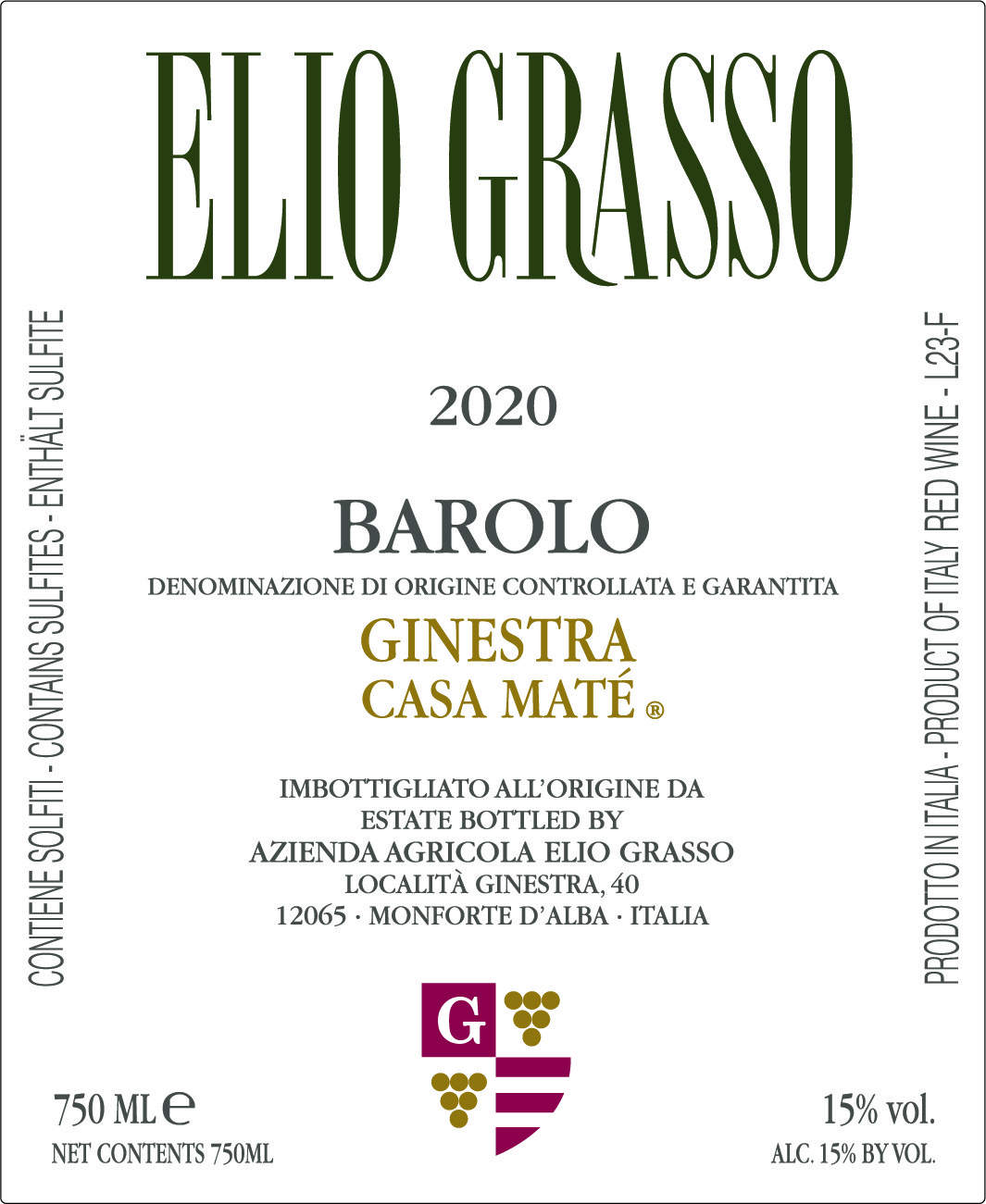2020 Barolo Nebbiolo
The Elio Grasso Ginestra Case Mate 2020 exemplifies the remarkable character of a Nebbiolo from the esteemed Barolo region. This full-bodied red showcases the grape's hallmark elegance and complexity, boasting high acidity and pronounced tannins that promise longevity. Its vibrant aromas of dark cherry, rose petals, and a whisper of tar invite you into a palate bursting with flavors of ripe strawberry, licorice, and subtle earthy undertones. The fruit intensity is prominent, yet there's a beguiling balance that leads to a food-friendly dryness, making this wine ideal for pairing with rich Italian dishes. The Ginestra Case Mate is a testament to the winemaking prowess of Elio Grasso, capturing both the power and grace of Barolo.
The Elio Grasso Ginestra Case Mate 2020 exemplifies the remarkable character of a Nebbiolo from the esteemed Barolo region. This full-bodied red showcases the grape's hallmark elegance and complexity, boasting high acidity and pronounced tannins that promise longevity. Its vibrant aromas of dark cherry, rose petals, and a whisper of tar invite you into a palate bursting with flavors of ripe strawberry, licorice, and subtle earthy undertones. The fruit intensity is prominent, yet there's a beguiling balance that leads to a food-friendly dryness, making this wine ideal for pairing with rich Italian dishes. The Ginestra Case Mate is a testament to the winemaking prowess of Elio Grasso, capturing both the power and grace of Barolo.




